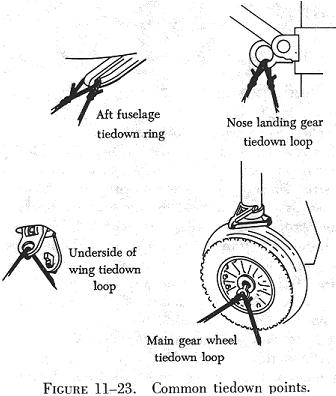Most heavy aircraft are equipped with surface control locks which should be engaged or installed when the aircraft is secured. Since the method of locking controls will vary on different type aircraft, check the manufacturer's instructions for proper installation or engaging procedures. In case high winds are anticipated, which may damage the control surfaces or locking devices, control surface battens can also be installed to prevent damage. Figure 11-23 illustrates four common tiedown points on heavy aircraft.
In general, the normal tiedown procedure for heavy aircraft should include the following:
1. Head airplane into prevailing wind whenever possible.
2. Install control locks, all covers and guards.
